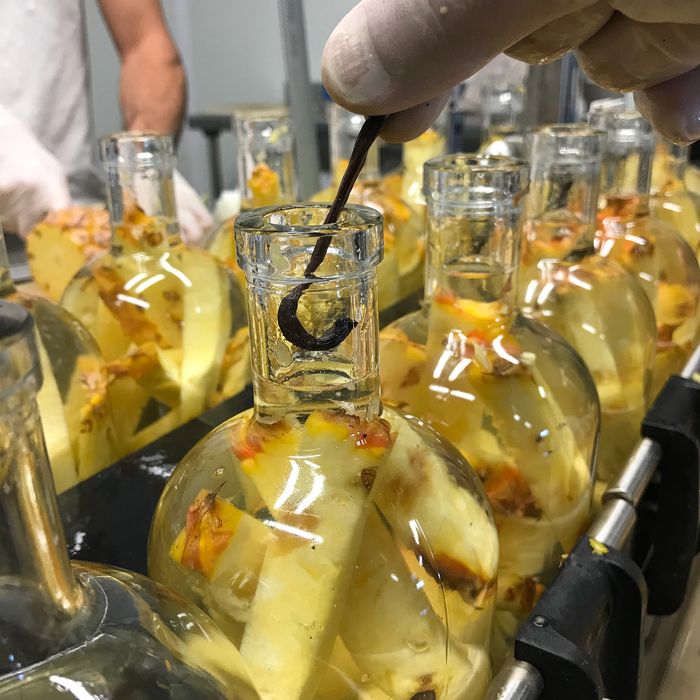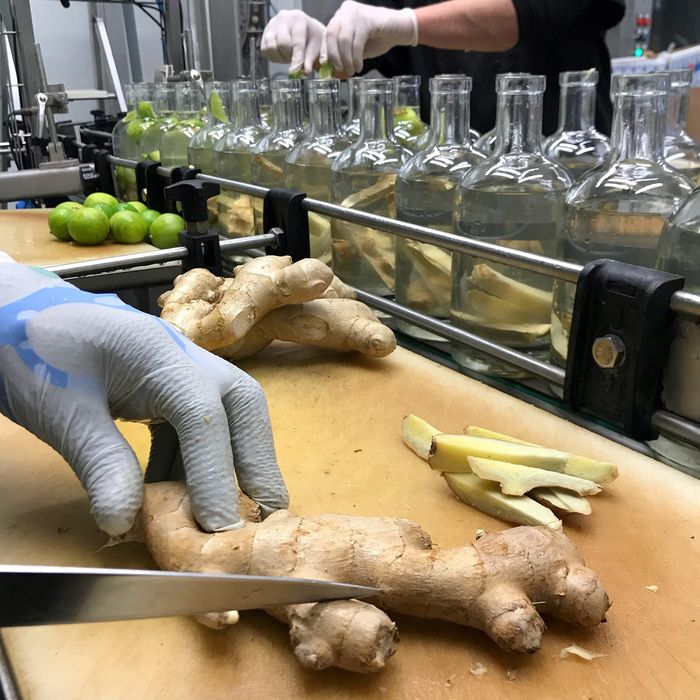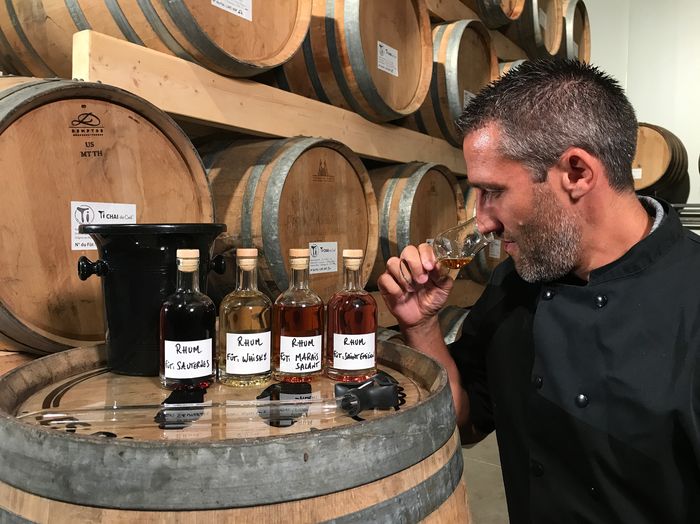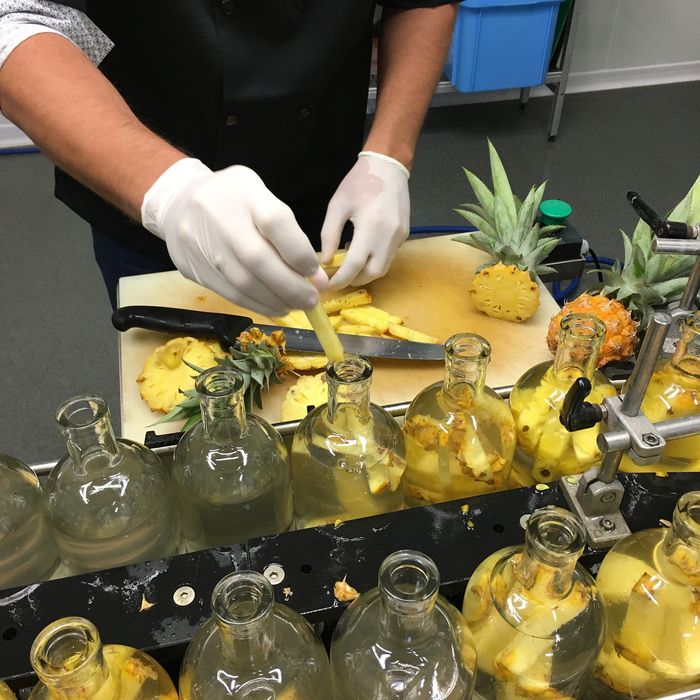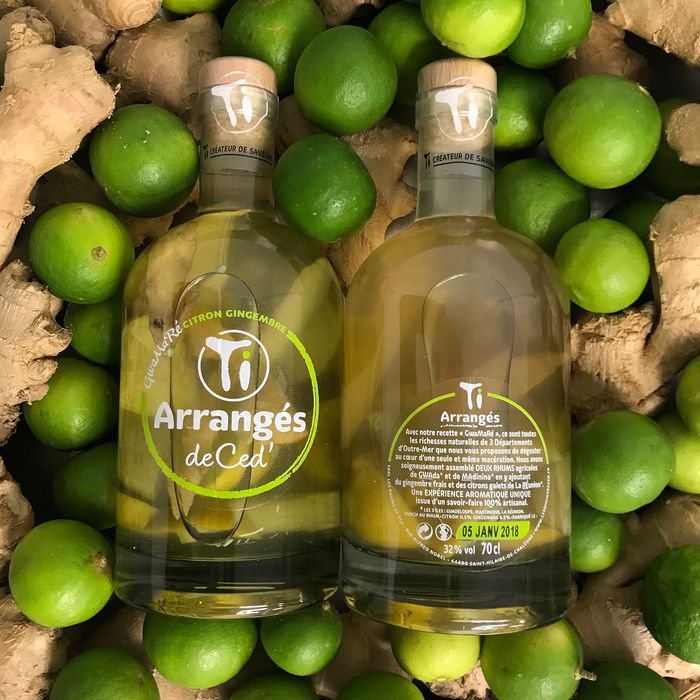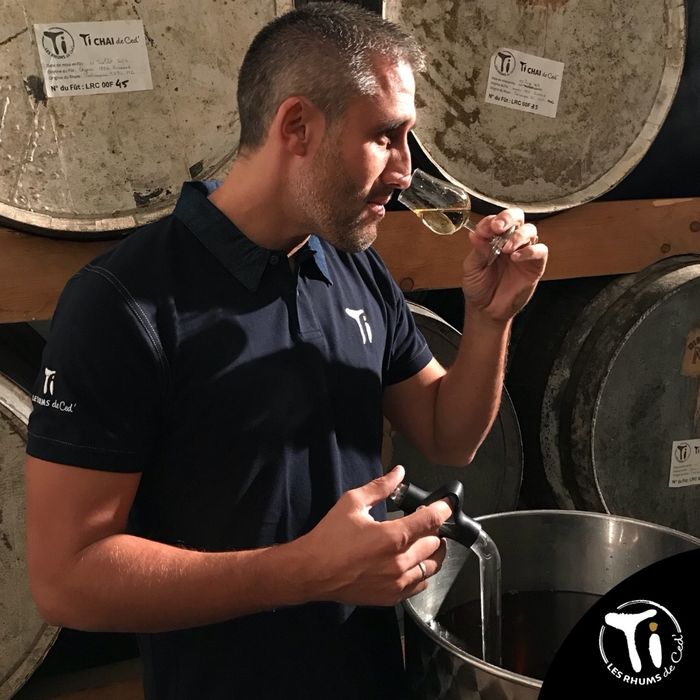
Today we have an appointment with a virtuoso of arranged rum , the one that has given it its letters of nobility for 8 years now. This former food engineer and high-level basketball player created Ti arrangés de Ced in 2011 in the Nantes region, and quickly received a number of distinctions, including a master craftsman label in 2013.
In a constant quest for quality and innovation, he has continually renewed the genre with original macerations (banana cocoa, kumquat coffee, etc.), advanced concepts (Point G, Ti Graal, etc.), aging in barrels (sauternes, sherry, etc.), and always carefully selected fruits, cut and bottled by hand.
We asked him a few questions about his philosophy, his methods, and about the future. A fruity interview to sip like a good arrangement 🙂
What was the world of rum like when you started in 2011?
When I started, I had almost no knowledge of the world of rum. I focused on my product and my values and then I set out to discover it.
Were there already bottled arranged rums on the market?
Yes, there were already some – I had identified 2 brands which remained localized only in Brittany.
How did you start to make yourself known? Locally? At trade fairs?
I made myself available a lot to do tastings at my clients' homes who were located in a geographical area close to the workshop (easier when you're starting out).
Word of mouth did the rest? Trade fairs? The fact that you travel further and further?
Word of mouth is a “simple” tool to start with – then I “exported” myself a bit far from my bases – thanks to trade fairs, and I also took my courage in both hands with sales tours – but that wasn’t where I was most comfortable.
What does the master craftsman label consist of?
The Master Craftsman label is a distinction awarded by the regional qualification commission. In my case, I obtained it in relation to the know-how recognized under the title of the promotion of craftsmanship. The elements that weighed in the balance are:
- My experience in the food industry through my training as an engineer
- The precision and meticulousness of the manufacturing process
- Significant distinctions obtained since 2013.
How long does it take to develop and then validate a recipe?
It all depends on the recipe – it can be anywhere from 3 months to 12 months.
Are you doing several tests at the same time, with different quantities of fruit, sugar, etc. for the same recipe?
For a recipe, when I have a doubt about the fruits – yes I test different proportions because we will obtain different balances. Then I work more and more on blends of rum refined in my barrels. On this work I spend more time because the total balance is more complicated to obtain.
On the syrup part, the syrup is a technical element and not a flavoring one. Let me explain, the sugar is the catalyst for the maceration which will allow me to extract the aroma of the fruit and nothing else. So my syrup recipe and its proportion in the overall product gives me this technical touch…and therefore not directly flavoring.
How long does it take for a bottle to be ready for sale, how long does it take from bottling the fruit to marketing?
Our specifications, which date from 2011, are a minimum of 1 month of maceration – and now, depending on the products, we can offer products with up to 30 months of maceration.
What is the most complicated recipe to manage?
The most complicated recipes to manage are those made from rums that have been aged in barrels. They necessarily take longer to be created. And there can be aromatic differences depending on the barrels from the same batch.
Do you have a favorite recipe?
Always the last one and the salted caramel pineapple is really great.
Are there any recipes that are difficult to reproduce on a large scale?
These are not necessarily recipes but concepts – that of the G-SPOT requires a lot of manipulation in a natural place – it must therefore be preserved so we do not do anything in any way.
For your new recipes, do you trust your palate alone? Do you call on your team? Do you need guinea pigs?
I call on the Les Rhums de Ced team who participate in the tastings – sometimes I do tastings outside when possible, but it's rarer. It's important to have several opinions to capture all palates and be as unifying as possible.
Do you have several trials in progress?
Always yes, you have to stay one step ahead in creation.
Will the secret remain well kept?
Do you still use agricultural rum?
Organic is not agricultural (it comes from Paraguay) – I have not yet had the opportunity despite various requests to be able to have organic agricultural products…I would like…
How long do you age your rums in barrels?
Minimum 6 months – the oldest are 5 years old. It’s a world that I really want to develop because I have a blast in it.
What's the oldest you've bottled so far?
The oldest is the cognac used for the salted butter caramel which was 2 ½ years old.
We're talking about real aging here! Did you learn on the job?
Yes, I learned everything on the job and I still have a lot to discover. It's such a fascinating world.
How many barrels does your cellar have now?
240 barrels from multiple origins – this is where the creation can begin.
After the takeover of your company (by the distributor Dugas), do you have other projects for the years to come?
I now have more time to create – so I will continue to have fun in this passion……
Are you present internationally? Does Dugas plan to develop this?
Before the takeover we were present: Spain – Switzerland – Italy – Czech Republic – Taiwan – USA – Canada. The DUGAS company has the strength to continue this development…there are so many things to do
Back to the G-spot, how did you develop this idea?
As is often the case, starting with an offbeat idea – and the more offbeat and qualitative it is, the more I want to see things through to the end. That’s a bit of what characterises me.
And the name comes from your pronounced taste for the alphabet?
Yes and also for the imagination
How did you create the latest salted caramel pineapple?
First of all, you always have to start with the different raw materials that you have and those that you obtain. I had the fruit and the salted butter caramel – I had to compose the rum base that could best put this gourmet association while sublimating it.
Are you a big rum lover?
I am becoming one in any case I am practicing to develop this skill.
What is your favorite style?
Basic I think – good old agricultural – good traditions – I don’t want to spread myself too thin at the moment – I want to learn so much about “old agricultural” and I don’t have enough time to go as fast as I would like.
Could it be interesting for you to work with an old rum?
Old ones coming directly from the distilleries? Yes, this is possible, but they are immediately much more marked by the wood and this is not the aromatic that I want first, so in my philosophy, I will not use them - or not now.
Do you have any tasting tips for your arrangements?
Let yourself go
Getting out of your preconceptions
Breaking out of the conventional
Don't set a framework
Share
Simplicity
For the temperature, I would say 8/12°C – like for a wine.
Is there a time limit for consuming them? Or is the maceration “set” so that it never becomes unbalanced over time?
From the moment the product is marketed, the maceration is regulated – then it can continue to evolve but with the initial guiding thread.
